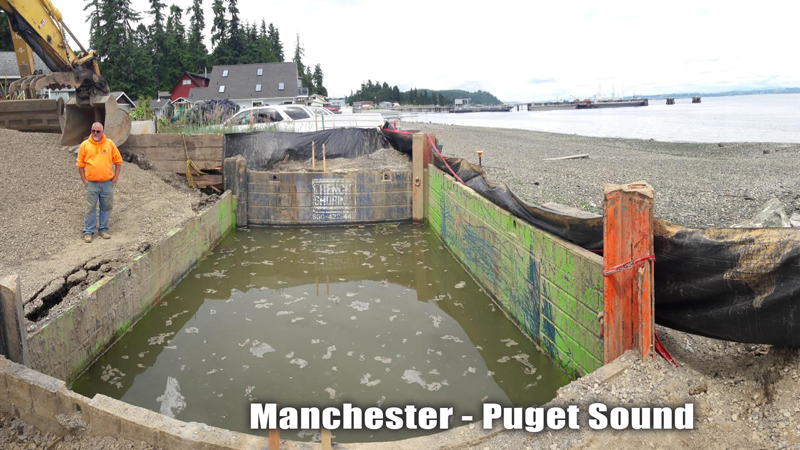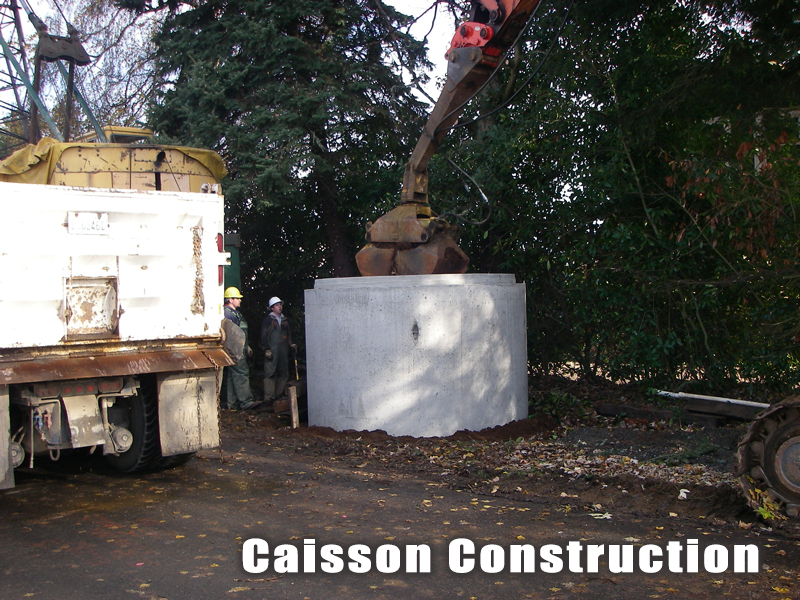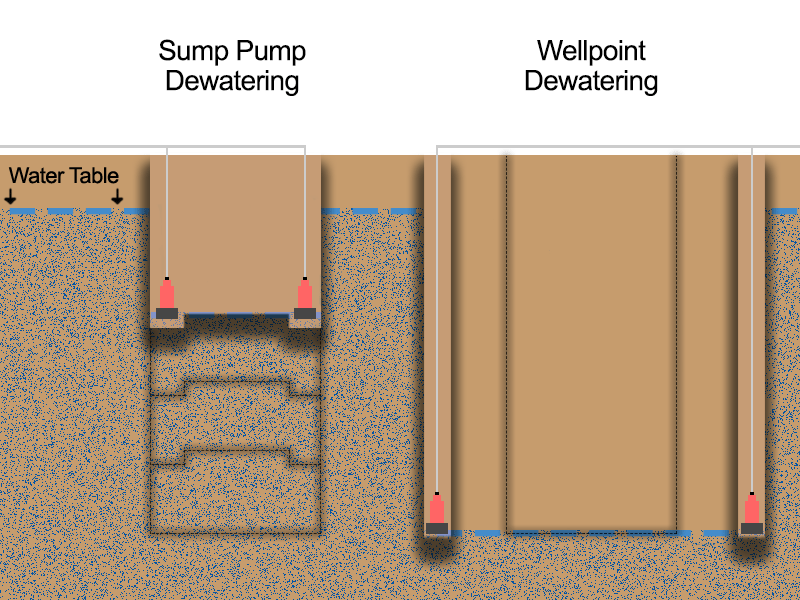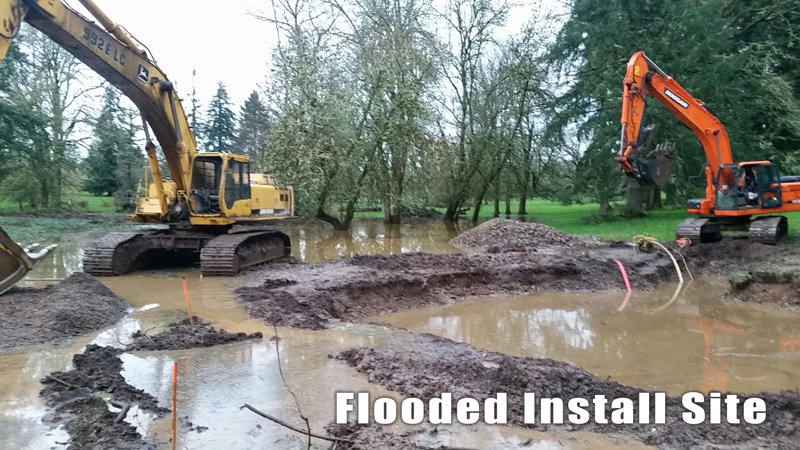
Romtec Utilities designs and supplies prefabricated pump stations for all types of applications. Most pump stations are designed to be installed underground, but even under the most ideal circumstances, construction underground can be challenging. One of the most difficult challenges for contractors with pump station installation projects is addressing dewatering. Romtec Utilities has experienced many projects that required dewatering, and being prepared for dewatering can be the difference between a smooth pump station installation and a problematic or delayed installation.
First, dewatering is the process of removing water from the ground soil so that a construction process can be completed in a dry atmosphere. A water table at the construction site is the depth where dewatering will be necessary. On some job sites, the water table is just a few inches below the surface of the ground. It is also important to recognize that the water table can change with weather. Being prepared for the changing conditions of a site is a good idea to ensure a trouble-free construction process.

Next, the contractor should consider the type of construction for the pump station. Most pump stations are installed through a conventional process of digging a hole, shoring the hole, and installing the well and vault structures. Some projects, however, are installed with caisson construction. With this style of construction, the hole is dug through the bottom of the structure itself. In other words, the soil is removed through the center of the well risers as the structure slowly sinks into place. Caisson construction can be well suited for wet soil conditions with a high water table, but the dewatering process is typically different than through a conventional construction process.
The second school of thought is a little different, and it is more suited toward a caisson installation method, though it would work for any project. It is typically called wellpoint dewatering. With this method, small wells are dug or bored around the construction site to an elevation below the bottom elevation of the pump station. The vacuum lines or pumps are lowered into the small wells and are ran prior to construction. These small wells effectively lower the water table of the construction site to an elevation below the pump station. This causes water to flow toward the pumps or vacuum lines instead of into the construction hole.

There are several methods of dewatering but for pump station installations these methods boil down to two primary schools of thought. The first school is simple. Dig a hole for the pump station and include one or more sump points that are slightly deeper. Then, use sump pumps to pump water from the pumping points. Each time the hole is dug deeper the process is repeated until it reaches the bottom elevation.

Prefabricated pump stations are a great product when they are completed through a process that clearly defines the prefabricated assemblies, evaluates the quality of the manufacturing, and ensures prefabricated assemblies are delivered correctly and ready for installation. Romtec Utilities has specific expertise in developing prefabricated pump stations, and it is no surprise that our customers are virtually always satisfied with our systems and our process. To start your own prefabricated pump station project, contact our sales team today!

Comments 1
My dad is planning to have his ground floor excavated because he’ll have a basement area built in it, which is why he’s currently looking for a dewatering service as well. Thank you for informing us that the contractors must consider the type of construction first before installing the pump station. I’m glad that you were also able to clarify here the importance of determining the right dewatering method before starting the project.